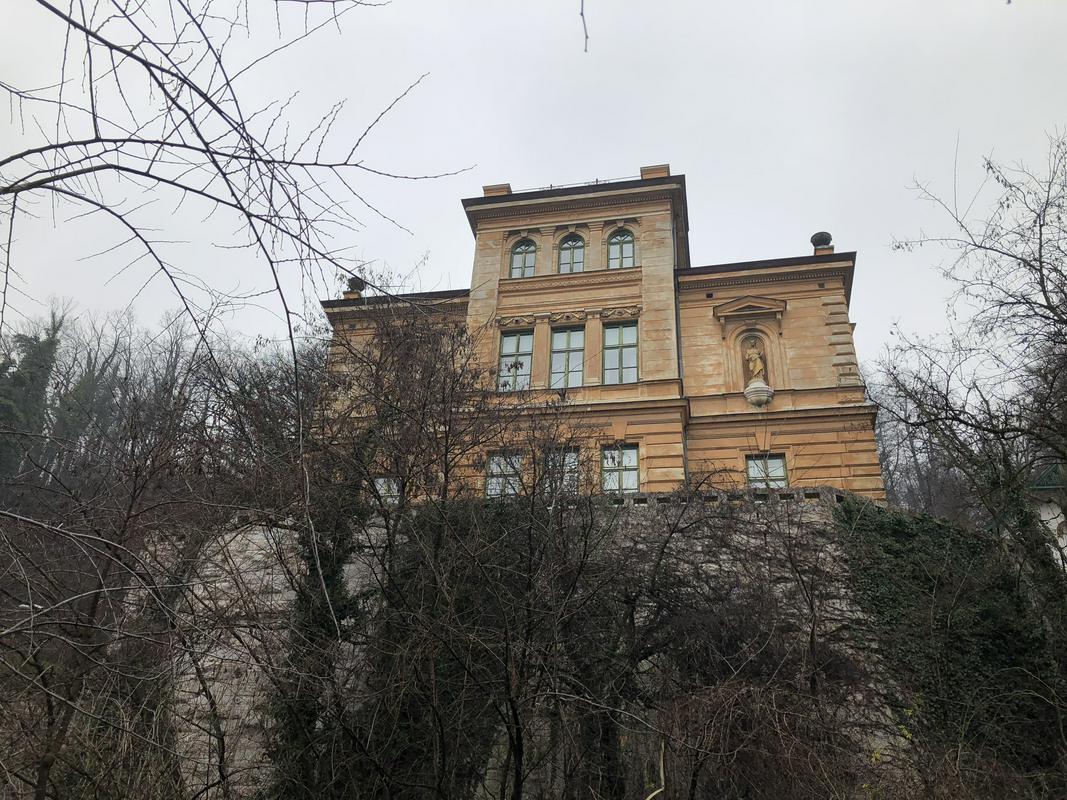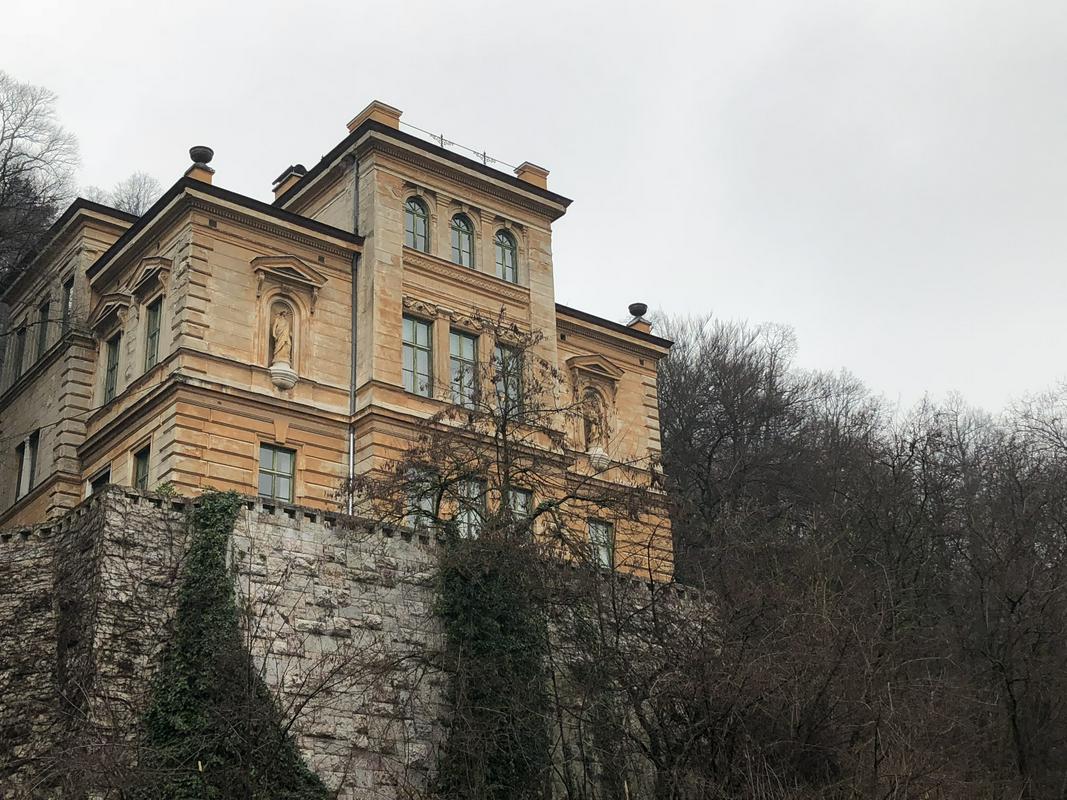

The story of the Samassa family in Slovenia began in 1767 when the first member of the dynasty moved to Ljubljana from modern-day Italy. He quickly established a foundry making bells, cannons, and other cast-metal objects. For five generations, the Samassas’ foundry business was famous throughout the Hapsburg Empire.
Albert Samassa, a member of the fourth generation, built a brand-new factory in the 1870s. By then, the family business was renowned for its church bells, with which it supplied churches throughout Austria. The success of the factory allowed Samassa to build himself a residence worthy of a 19th century industrialist.
He had a magnificent villa constructed on Ljubljana’s Castle Hill. An unknown architect conceived the home with three floors and a neo-Renaissance façade complete with decorative statues. The building was big enough to contain several bedrooms, offices, and reception halls. The house was even equipped with Ljubljana’s first telephone line, which enabled Albert Samassa to keep in direct contact with his factory. The villa’s sizeable garden included a pavilion.
Maks Samassa, Albert’s son, found great success in manufacturing arms for the Austro-Hungarian military when he took over the business. But political circumstances changed after World War I, and Samassa left Ljubljana for Vienna. The story of the Samassa dynasty in Slovenia was over.
The villa changed owners several times. After World War II, it ended up in the hands of the Statistical Office. The construction of a tunnel beneath Ljubljana’s Castle Hill in 1959 led to the destruction of the property’s driveway and much of the original garden. Meanwhile, the villa itself remained largely unchanged. It was registered as a cultural monument, but because of a lack of funds, it has deteriorated over the years. Still owned by the state, it is waiting for a new glory age. For now, only old photographs reflect the onetime magnificence of one of Ljubljana’s most spectacular residences.

































































